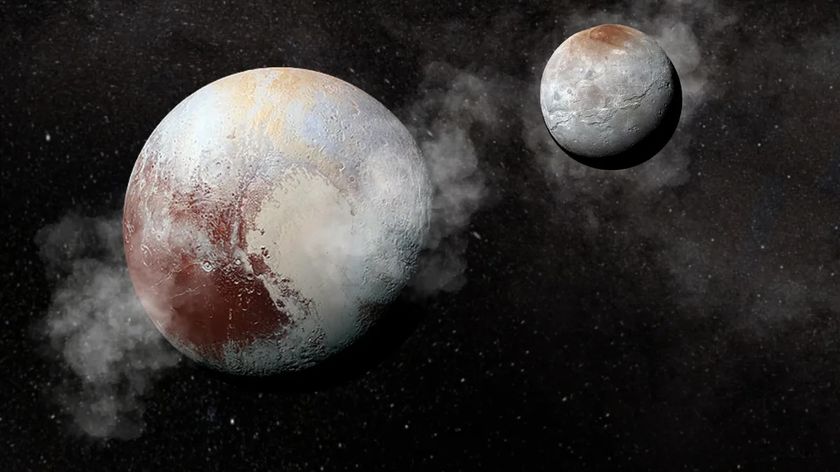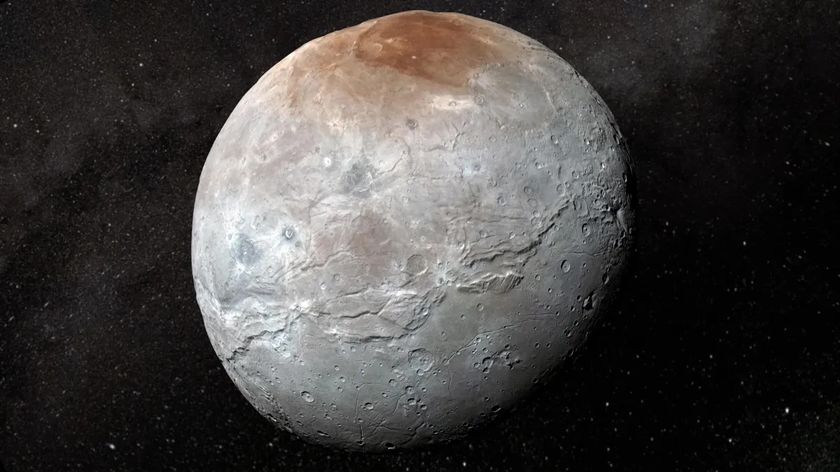Flying Telescope Chases Down Pluto's Shadow
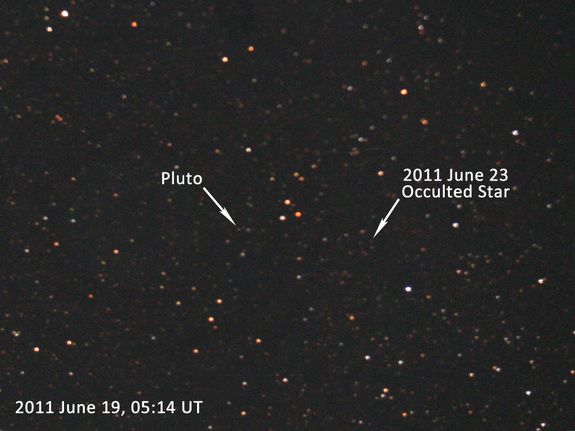
A NASA airborne telescope has chased Pluto's shadow over the Pacific Ocean to measure new details of the dwarf planet's atmosphere.
The telescope, called the Stratospheric Observatory for Infrared Astronomy (SOFIA), is a 100-inch (2.5-meter) reflecting instrument mounted on a highly modified Boeing 747SP aircraft. A
stronomers used the flying observatoary's mobility to position itself in the right place and time to catch a so-called "occultation" of Pluto, when the dwarf planet passed in front of a distant star, and its shadow hit a specific location on Earth.[Photos of Pluto and its three moons]
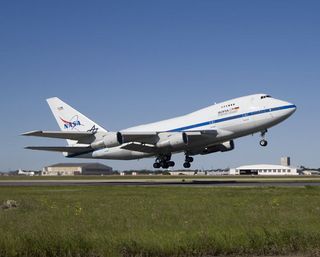
Probing the atmosphere
The June 23 observation allowed scientists to learn new details about Pluto and its moons.
"Occultations give us the ability to measure pressure, density, and temperature profiles of Pluto's atmosphere without leaving the Earth," said Ted Dunham of the Lowell Observatory in Flagstaff, Ariz., who led the team of scientists aboard SOFIA during the Pluto observations. "Because we were able to maneuver SOFIA so close to the center of the occultation we observed an extended, small, but distinct brightening near the middle of the occultation. This change will allow us to probe Pluto's atmosphere at lower altitudes than is usually possible with stellar occultations."
In addition to SOFIA's mobility, the observatory has the advantage of operating in the stratosphere at altitudes up to 45,000 feet, above the water vapor in Earth's lower atmosphere that blurs light.
Sign up for the Live Science daily newsletter now
Get the world’s most fascinating discoveries delivered straight to your inbox.
"This was the first demonstration in practice of one of SOFIA's major design capabilities," said Bob Meyer, SOFIA's program manager, in a statement. "Pluto's shadow traveled at 53,000 mph across a mostly empty stretch of the Pacific Ocean. SOFIA flew more than 1,800 miles out over the Pacific Ocean from its base in Southern California to position itself in the center of the shadow's path, and was the only observatory capable of doing so."
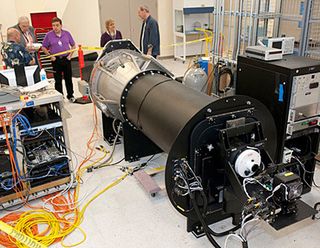
Tense moments
There were a few tense moments for SOFIA's international science team in the minutes leading up to Thursday's occultation.
The precise position of Pluto in relation to Earth could not be sufficiently refined until a few hours before the event. That evening, a Lowell astronomer used facilities at the U.S. Naval Observatory in Flagstaff, Ariz., to take multiple photographs of Pluto and the star.
Those data were passed to collaborators at the Massachusetts Institute of Technology (MIT) in Cambridge, Mass., who refined their prediction of the exact position and timing of Pluto's shadow track.
About two hours before the occultation, the MIT group contacted SOFIA in-flight with the news that the center of the shadow would cross 125 miles north of the position on which the airborne observatory's flight plan had been based.
After recalculating and filing a revised flight plan, SOFIA's flight crew and science team had to wait an anxious 20 minutes before receiving permission from air traffic control to alter the flight path accordingly.
Ground-based team
Although not blessed with such flexibility, another ground-based team did manage to observe the Pluto occultation as well. These researchers observed the occultation from various Pacific Islands and California/Baja California on June 23, on an expedition sponsored by the National Geographic Society, NASA’s Planetary Astronomy program, NASA’s New Horizons mission, and the Southwest Research Institute.
The team plans to observe another occultation on June 27, from many of the same islands. The star will also be occulted by Pluto's small moon Hydra as seen from Australia.
"One nifty trick is that the June 23 observations, including the NGS-funded sites, will pinpoint where in Australia to go to observe Hydra," wrote team member Leslie Young of the Southwest Research Institute, on a National Geographic blog. "We plan to look at Hydra with 10 to 30 amateurs in Australia with moderate-sized telescopes."
This story was provided by SPACE.com, sister site to LiveScience. Follow SPACE.com for the latest in space science and exploration news on Twitter @Spacedotcom and on Facebook.

